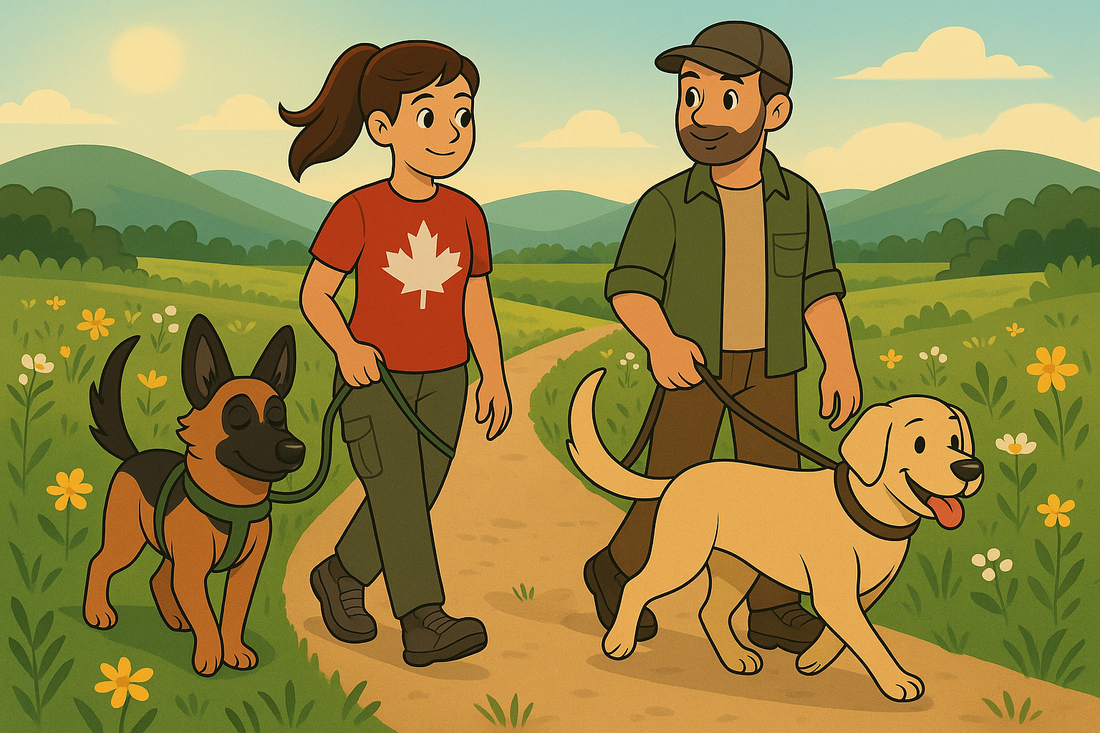
Exercises to Teach Your Dog to Be Neutral Around Other Dogs
Partager
Teaching your dog to remain calm and neutral around other dogs is an essential life skill, especially for reactive or overly excitable pups. Neutral behaviour means your dog can coexist with other dogs without overreacting, showing aggression, or becoming overstimulated.
Here are five practical exercises to help your dog build that calm, collected confidence around other dogs:
1. The “Look at That” Game
This exercise teaches your dog to notice another dog without reacting. It’s a fantastic confidence-builder, especially for reactive or overly excited dogs.
How to do it:
-
Start in a low-distraction environment (your yard or a quiet park).
-
Keep your dog on leash.
-
When your dog notices another dog and remains calm, say “Look at that,” then immediately reward them with a treat.
-
Repeat this at gradually closer distances as your dog improves.
Tip: Begin at a distance where your dog can observe without reacting. If they get too excited, increase the distance again. Success comes from calm observation, not interaction.
2. Parallel Walking
This is one of the most useful tools for reactive dogs. It allows them to adjust to another dog’s presence without pressure to interact.
How to do it:
-
Find a safe, open space like a field or trail.
-
Walk your dog parallel to another dog at a comfortable distance, start with at least 10–15 feet (more if needed).
-
Walk in the same direction and pace, rewarding your dog for focusing on you.
-
Gradually decrease the distance as both dogs remain calm.
Tip: Don’t rush it. If either dog gets overstimulated, increase distance and try again. Calm behaviour should be your goal, not contact.
3. Controlled Meet-and-Greets
This is a structured way to teach appropriate behaviour during introductions.
How to do it:
-
Start in a neutral, calm area with both dogs on leash.
-
Begin at a distance, allowing them to observe each other without approaching.
-
Watch closely for body language loose and wiggly is good; stiff or tense means back off.
-
Let them meet briefly only if both are relaxed.
-
Keep the greeting short, then calmly redirect and reward.
Tip: Work with a friend who has a calm dog. Avoid greetings with unknown or overly excited dogs until your pup is more confident.
4. The “Place” Command
“Place” helps your dog remain calm and settled in a designated spot, even when other dogs are nearby.
How to do it:
-
Teach your dog to go to a mat or bed and stay there.
-
Once they’re reliable, add mild distractions, like another dog in the room.
-
Reward for staying calm and holding the position.
-
Gradually increase distractions, like light play or movement from the other dog.
Tip: Keep sessions short and fun. End on a success, and always make the mat a calm, safe place, not a punishment.
5. Reinforce Focus with “Watch Me”
This command helps your dog redirect attention from another dog back to you.
How to do it:
-
Start in a quiet space. Hold a treat to your face and say, “Watch me.”
-
When your dog makes eye contact, reward.
-
Practice this near other dogs, rewarding the moment your dog looks away from the distraction and back at you.
Tip: Use high-value rewards in tougher situations. The more distractions present, the bigger the payoff should be for choosing you.
Conclusion: Calm Is a Skill Teach It Like One
Teaching neutrality doesn’t happen overnight. It takes time, patience, and consistency, but it’s so worth it. You’re not trying to create a social butterfly. You’re creating a dog that feels confident and in control, even around other dogs.
Celebrate the little wins. A glance without barking? A calm walk past another dog? That’s progress. And if you’re feeling stuck, a qualified trainer or behaviourist can help guide the process.